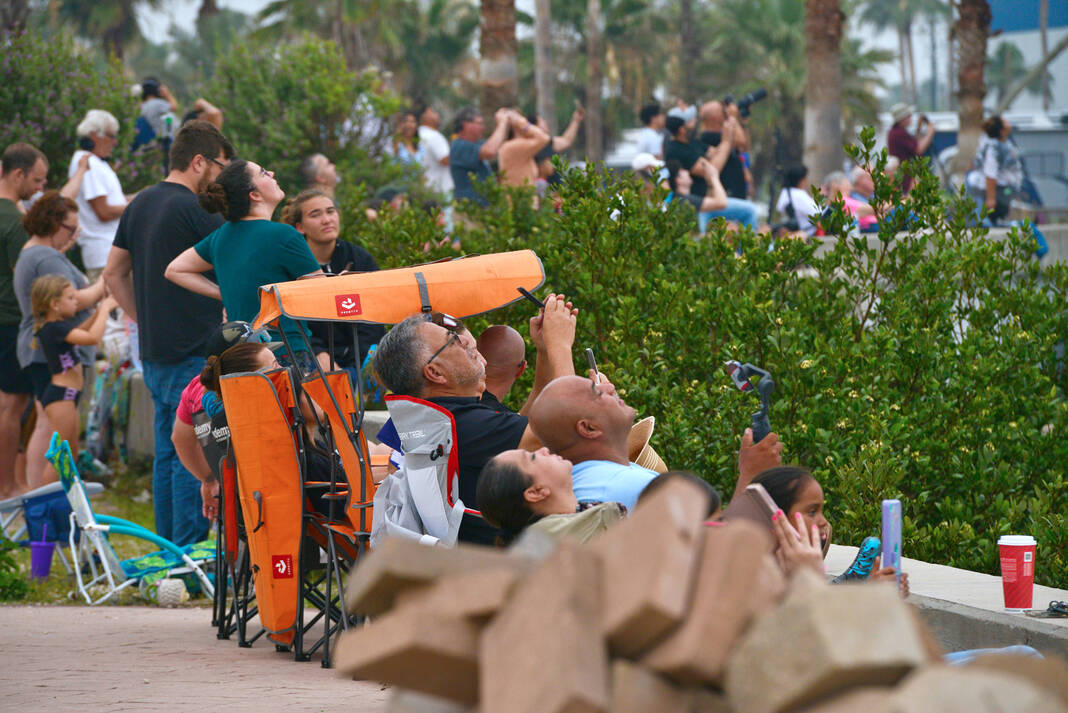|
Only have a minute? Listen instead
Getting your Trinity Audio player ready...
|
SpaceX’s fourth Starship orbital test flight, which launched from Boca Chica/Starbase at 7:50 a.m. Thursday, proved the most successful so far, Starship S29 transmitting data up until the moment of splashdown in the Indian Ocean off the northwestern coast of Australia 66 minutes after launch.
By 25 minutes into the flight, Starship had attained a speed of approximately 16,295 mph and an altitude of nearly 132 miles above the Earth.
For the first time, the Super Heavy booster rocket managed a controlled landing in the Gulf of Mexico following “hot stage” separation from Starship, occurring three minutes after liftoff. A video camera aboard Super Heavy B11 live-streamed the progress of the post-separation descent and landing all the way to the water.
Thirty-two of the booster’s 33 liquid-oxygen and liquid-methane power engines ignited for liftoff, while all six of Starship’s six engines ignited for stage separation as planned.

Another camera, mounted aboard Starship S29 and aimed at one of four aft control flaps (the images beamed to mission control via Starlink), revealed a spectacular view of the spacecraft during ascent, during its “coast phase” after engine shutdown, and during reentry — including a glowing plasma field caused by extreme heat as the ship came in at a diagonal attitude toward the ocean.
At around 58 minutes into the flight, the camera showed the flap beginning to burn and come apart where it attached to the stainless-steel-clad fuselage of Starship, the camera lens soon becoming covered in debris and eventually cracking, though it was still just possible to make out the damaged flap actuating normally as it helped control the craft’s descent to the water.
Toward the end of the third orbital test flight, on March 14, Starship S28 experienced loss of roll control, resulting in a less-than-optimal descent attitude and loss of the ship during reentry. Starship S29 was fitted with additional thrusters to avoid a repeat of that problem, and it appears to have worked.
The ship survived reentry and, at one hour and six minutes after launch, initiated a planned “landing burn” just before striking the water, the first time a Starship test vehicle has done so. Cheers erupted at SpaceX mission control in Hawthorne, California, when the milestone was achieved.

Kate Tice, SpaceX Quality Systems Engineering senior manager and launch live-stream host, said no recovery of Starship or Super Heavy was planned for this mission, and that the primary goal was for Starship to survive reentry. The reams of data transmitted during the entire flight, meanwhile, will guide further improvements for subsequent test flights, she said.
“We are still learning how to improve the ship for total survivability and rapid reusability,” Tice said.
Although the Federal Aviation Administration ordered mishap investigations after the first three orbital test flights, no such investigation will be necessary for today’s test, since the mission went largely according to plan and no serious or unanticipated anomalies involving loss of vehicles took place. The FAA announced on June 4 that it had issued the modified license necessary for this morning’s launch.
Boca Chica/Starbase is central to SpaceX’s development of the rocket for NASA’s Artemis lunar program. The company has a $2.9 billion contract with the space agency to develop Starship as the Human Landing System that will transport astronauts back to the moon for the first time since 1972 as part of the program.




